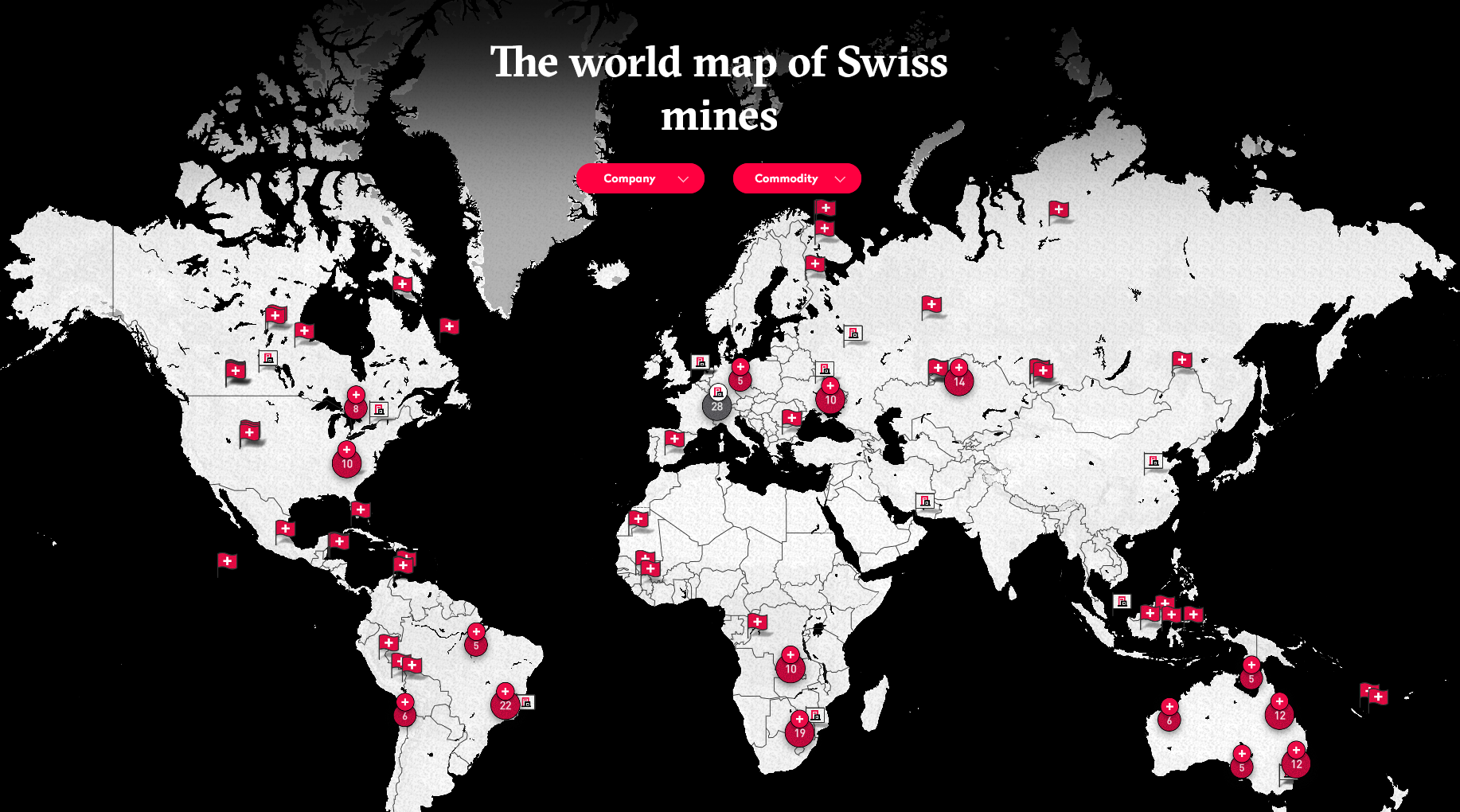World map of Swiss mines: Commodity traders dig up their own coal, copper and cobalt, but ignore responsibilities
Zurich, Lausanne, September 16, 2025

Swiss commodity traders are increasingly doing business with their own production facilities. Trading continues to be their main activity, but an ever-increasing number of companies, such as Trafigura, are strategically expanding their value chain. This “vertical integration” has accelerated significantly after the industry’s historic record profits in the war and crisis years of 2022-23. Following Glencore’s example, mining companies such as BHP or Vale have long been controlling the sale of their own raw materials from the borders of Lake Zug, Lake Geneva or Lake Lugano. There are 25 companies whose global mining sites Public Eye has investigated, trawling through annual reports, databases and satellite images, recording their location down to the nearest metre. The result is a world map detailing where Swiss companies extract raw materials. For the first time, our interactive tool creates geographical transparency in the constantly expanding mining industry.
More than half of all 199 mines mapped are located in Africa, Asia and Latin America. In more than a third of them they are digging for what is by far dirtiest of all energy raw materials. For instance, in South Africa, where more than two-thirds of electricity is still generated from coal, several Swiss commodity traders are investing heavily in the mining of the black climate-killer, including Glencore and the previously low-profile Mercuria. But Swiss traders also lead the way in extracting the raw materials required for the global energy transition. For example, they operate or own 28 copper mines, including the world’s most productive mine in Chile. Another highly prized transition mineral is cobalt. The Democratic Republic of Congo is the world’s largest producer of this mineral, with three Swiss commodity companies controlling more than 70 percent of the country’s production. And in Australia, Swiss traders are heavily involved in the mining business, with 40 mines.
The extraction of these newly sought-after raw materials again raises the human rights and environmental issues endemic in this sector, on which many developing and emerging countries are existentially dependent. This is highlighted by the ten case studies supplementing the world map. These include accounts about the disregard for the rights of indigenous communities around a Guatemalan nickel mine of the Zug-based Solway Group, the urgent threat posed to as yet undiscovered deep-sea ecosystems by the metal extraction plans of the Freiburg-based Allseas, and a fatal tunnel collapse on the site of a Congolese cobalt mine owned by a Glencore subsidiary, resulting in the death of dozens of miners. These and the seven other documented scandals indicate that as their value chain increases, so does the social and environmental responsibility incumbent upon old traders and new mining barons. To clamp down on their disregard for human rights and environmental standards, Switzerland’s political establishment must first systematically record the origin of all commodities traded via Zug or Geneva. And then, finally, it needs to introduce effective legislation imposing due diligence and transparency obligations, as provided for by the Responsible Business Initiative, but also by the Commodity Market Supervisory Authority (ROHMA), long called for by Public Eye.
More information here or from:
- Oliver Classen, Spokesperson, +41 (0)44 277 79 06, oliver.classen@publiceye.ch
- Manuel Abebe, Commodities Expert, +41 (0)77 455 42 43, manuel.abebe@publiceye.ch

